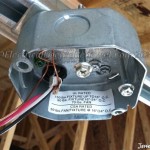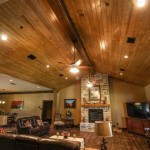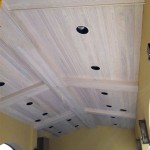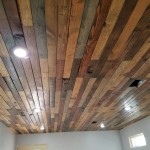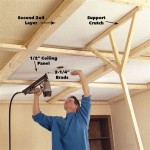```html
How To Cut Crown Molding For Ceiling Perfection
Crown molding adds a touch of elegance and sophistication to any room. However, installing it can be a challenging task, particularly when it comes to accurately cutting the necessary angles. This article provides a comprehensive guide on how to cut crown molding for a ceiling, ensuring a precise and professional finish.
Before embarking on the installation process, it is crucial to understand the fundamental principles of crown molding angles. Unlike baseboards, which typically lie flat, crown molding sits at an angle, bridging the gap between the wall and the ceiling. This angled placement introduces unique challenges when cutting. The most common crown molding spring angle is 45 degrees. This dictates the angle at which the molding rests against the fence and table of your miter saw.
Accurate measurements are paramount to a successful installation. Start by measuring each wall accurately. Note that walls are rarely perfectly square. Minor imperfections can accumulate and result in noticeable gaps if not addressed. For inside corners, precise measurements are especially critical. If a room is not square, you might need to adjust the angle of your cuts slightly. Walls that deviate even a few degrees from 90 degrees will impact the outcome of your corners. Using a protractor or angle finder can help determine the exact angle of inside corners that are not perfectly square.
Understanding Spring Angle and Miter Saw Setup
The "spring angle" is the angle at which the crown molding rests against the wall and ceiling. Common spring angles are 38 degrees and 45 degrees, but these can vary. It is essential to know the spring angle of your molding before proceeding with any cuts. This information is usually available from the manufacturer or supplier. Knowing the spring angle is absolutely critical because it determines how the molding needs to be positioned on the miter saw.
A miter saw is the tool of choice for cutting crown molding. The saw needs to be properly set up and calibrated to ensure accurate cuts. Most miter saws include tables and fences designed to facilitate crown molding cuts. The fence is the vertical surface against which the molding rests, and the table is the horizontal surface. The miter angle setting refers to the angle of the blade relative to the fence, while the bevel angle refers to the angle of the blade relative to the table.
For most 45-degree spring angle crown molding, the "nested" method is commonly used. This involves placing the crown molding upside down and at an angle within the miter saw, resting against both the fence and the table. Imagine the crown molding is the top corner of a room. The ceiling part is placed down on the saw table, and the wall part is placed against the fence of the saw. This setup allows you to create the compound angles needed for accurate miters.
Before cutting any actual molding, it is highly recommended to perform test cuts on scrap pieces. This allows you to verify your measurements and saw settings and make any necessary adjustments. This practice significantly reduces the chances of wasting expensive crown molding due to inaccurate cuts.
Cutting Inside Corners
Inside corners are where two walls meet, forming an angle of less than 180 degrees. Cutting inside corners involves creating a cope, which is a curved cut that follows the profile of the molding. This cope joint allows one piece of molding to fit snugly against the other, even if the corner is not perfectly square. It is an alternative to a mitered joint that could open up if the corner isn't a perfect 90 degrees.
To cut an inside corner, first cut one piece of molding at a 45-degree angle (assuming a 90-degree corner). This “mitered” piece will be the piece that the coped edge buts against. The next piece requires a cope cut. Begin by cutting the second piece of molding at a 45-degree angle, just like the first. However, instead of installing it as is, the mitered edge will act as a guide for the coping cut.
Using a coping saw, follow the profile line created by the miter cut on the second piece of molding. Angle the saw blade slightly backward to create a back-cut. This means the back of the molding will be slightly shorter than the front. The back-cut ensures a tight fit against the first piece of molding. This is a critical detail. It is more important that the front edges fit perfectly, rather than the back.
Carefully remove the waste material, leaving a coped edge that perfectly matches the profile of the first piece of molding. A rasp or file can be used to refine the cope and ensure a smooth, clean fit. Take your time with the coping saw; it requires a steady hand and precision to create a clean and accurate cope. Often, a small amount of material is left at the very tip of the profile. Using a sharp chisel can remove this, or even a very course grit sandpaper wrapped around a dowel.
Test the fit of the coped piece against the mitered piece. The coped edge should snugly fit against the profile of the first piece, creating a seamless joint. If necessary, make small adjustments to the cope with a file or rasp until a perfect fit is achieved. The key is a tight, nearly invisible seam where the two pieces meet on the visible face.
Cutting Outside Corners
Outside corners are where two walls meet, forming an angle of greater than 180 degrees. Cutting outside corners involves mitering both pieces of molding at precise angles to create a smooth, seamless transition. Here again, precision is vital.
For a standard 90-degree outside corner, each piece of molding needs to be mitered at 45 degrees. However, walls are not always perfectly square, so the angle may need to be adjusted accordingly. Use an angle finder to determine the exact angle of the corner and divide that angle in half to determine the miter angle for each piece of molding. If the corner forms a 93-degree angle, for instance, the miter angle for each piece would be 46.5 degrees.
To cut an outside corner, place the first piece of molding into the miter saw, nested in the same manner as described earlier. Set the miter angle to the calculated value. Make the cut carefully, ensuring the blade is aligned precisely with the marking. Repeat the process for the second piece of molding, ensuring that the miter angle is set correctly and that the cut is made in the opposite direction. It is helpful to remember the phrase "right to right" or "left to left". This means that if the corner is on the right side of the wall, then one piece will be held to the right of the saw blade, and the other to the right of the saw blade.
Test the fit of the two pieces of molding. The mitered edges should meet perfectly, creating a seamless joint. If the fit is not perfect, make small adjustments to the miter angle and recut the pieces. A slight error can become more pronounced as the corner is installed. If you have a small gap, wood filler can be used to conceal it.
For outside corners, applying wood glue to the mitered edges before joining them together is highly recommended. This will create a stronger, more durable bond. After applying the glue, clamp the pieces together until the glue has fully cured. This will prevent the joint from separating over time. Use a high quality polyurethane adhesive for the best results. Some may choose to reinforce the joint with nails, as well.
After cutting and fitting the crown molding, it is crucial to properly install it. Use a nail gun with finishing nails to secure the molding to the wall studs and ceiling joists. Ensure the nails are properly set and concealed. Spackle can be used to fill the nail holes. Use a level to ensure the molding is straight and even. If the walls or ceiling are uneven, shims may be necessary to create a level surface. Caulk all gaps between the molding and the wall and ceiling. This will create a seamless, finished look and prevent drafts. Finally, paint or stain the molding to match the existing trim and decor. Following these steps will result in a professional-looking installation that enhances the beauty of the room.
```
How To Cut Crown Moulding The Home Depot

How To Cut A Vaulted Sloped Cathedral Up Crown Molding Corner The Easy Way With Creative

Installing Crown Moulding On A Sloped Ceiling Doityourself Com Community Forums

Installing Crown Moulding On A Sloped Ceiling Doityourself Com Community Forums

Six Essential Tools For A Seamless Crown Molding Install Top Shelf Diy

How To Install Crown Molding

Cutting Crown Moulding Without Compound Cuts Homerenovation Diy C Coping Molding Tiktok

Installing Crown Molding Program 6 Advanced Techniques With Gary Katz

7 Ways To Cope Crown Molding Wikihow
How To Cut A Crown For Vaulted Ceilings Quora
Related Posts




